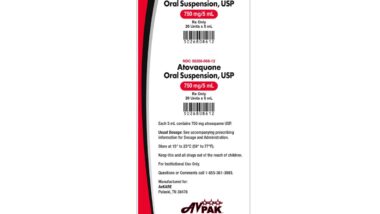Top Class Actions’s website and social media posts use affiliate links. If you make a purchase using such links, we may receive a commission, but it will not result in any additional charges to you. Please review our Affiliate Link Disclosure for more information.

In 2011, the FDA approved Onfi to be marketed in the United States primarily to treat individuals that suffer from seizures caused by Lennox-Gastaut Syndrome, a severe form of epilepsy that usually begins in children younger than four years old. Onfi has been sold in Europe and Asia to treat epilepsy and some mood disorders since the 1970s.
However, some Onfi patients have experienced a severe side effect called Stevens Johnson Syndrome (SJS). SJS is a skin disorder that usually starts out with flu-like symptoms such as fever, sore throat, and headache. It affects up to 30 percent of the epidermis. The skin rash may initially start out as hives, but blisters will begin to develop on the skin and mucous membranes, especially the mouth, nose, and eyes. It usually culminates in the shedding of the skin — which means that the top layer of the skin has died. Eating, sleeping, urinating and even breathing can all become difficult. If blisters develop on the eyes, it can cause blindness.
SJS is fatal in about 5 percent of patients who contract it. Lesions can develop on internal organs such as the heart, lungs, kidneys, or liver, causing inflammation on those organs. It can also cause sepsis, a condition in which the bacteria from the infection enter the bloodstream. It can take months to recover from and can leave lasting damage.
There is a more severe form of SJS called Toxic Epidermal Necrolysis (TEN), in which anywhere from 30 to 100 percent of the epidermis is affected by the rash and blisters.
SJS is a side effect of other prescription medications, such as Zithromax and Lamictal, which is also for treating seizure patients. Many patients who have suffered from SJS are filing lawsuits against the manufacturers of the medications, claiming that they have not provided adequate warning about the drugs’ risks.
A lawsuit was recently filed against Onfi drug maker Lundbeck Pharmaceuticals by a mother whose son came down with Stevens Johnson Syndrome after taking the epilepsy medication for just a few weeks. As awareness about the risk of Onfi SJS increases, more lawsuits are likely to follow.
If you or someone you know has suffered from Stevens Johnson Syndrome as a result of taking Onfi or other medications, legal options are available. Please visit the Stevens Johnson Syndrome (SJS) & Toxic Epidermal Necrolysis (TEN) Class Action Lawsuit Investigation where you can submit a claim for a free legal consultation. Experienced legal professionals have access to medical experts to assess whether this anti-seizure medication played a role in your allergic reaction, so act now.
ATTORNEY ADVERTISING
Top Class Actions is a Proud Member of the American Bar Association
LEGAL INFORMATION IS NOT LEGAL ADVICE
Top Class Actions Legal Statement
©2008 – 2024 Top Class Actions® LLC
Various Trademarks held by their respective owners
This website is not intended for viewing or usage by European Union citizens.














